|
This is the Wing-barred Piprites. It is not a lifer for me BUT these are my first pictures that I managed to take from this strange bird. It was moving above me, about 3 meters high, but since it was a in the shades I only saw movements. When the bird sat still for some seconds I decided to take several shots first. After it flew away I checked the photos and my first thought was that it is a weird bird. Colors were seen divided on different places. Glad to have finally shot him.
This small flycatcher is best known for its call; 'free beer". Likes to play hide and seek between the branches and from time to time you will see one looking at you. But what is even more difficult to see, is their yellow crown patch. Most of the time it is concealed and makes you sometimes wonder if you have the right bird. Today this Tyrannulet was nice enough to reveal the yellow patch to me. It was also that we were at almost the same level.
The Yellow-crowned Tyrannulet is already a small flycatcher. So imagine my surprise when I noticed a juvenile Yellow-crowned Tyrannulet. Smaller in size but also look at the plumage. It was sitting pretty quiet while both parents kept coming back to feed it.
It just stopped raining when I went out to see if I could photograph anything right before darkness. Just when I wanted to return back I noticed these 3 Black Curassows close to each other on top of a branch, soaking wet. At least they got a nice shower for the day.
This photo was taking during a rainy day. It was a bit misty too and not a lot of sunlight. But these 3 Capped Herons did brighten up my day. Perfectly aligned on top of this log. Not sure if they were siblings or just 3 strangers that could get along with each other.
The Rufous Potoo is the smallest Potoo of the Nyctibiidae Family and are in general a rare bird. Suriname finally can join the club that also inhabits this poorly known small nightbird. This is the story: This rare bird was first spotted and photographed on October the 6, 2021 by Keiran and Simon. When we noticed that the Rufous Potoo wasn't even mentioned in the Fieldguide of Suriname, we were excited to share about this 'discovery. To confirm a new bird species you need either photo or audio proof. Well, did we take more than enough photos. Here you see an adult female resting on top of a stick, but later it was revealed that she was actually sitting on a nest. A new bird for Suriname that is also nesting!! Since there wasn't much known about the whole nesting process of the Rufous Potoo, I decided to observe her this whole time, by visiting the area once per week and using trap cams during my absence. On October 18, 2021 I went back with Keiran right before nightfall. When darkness appeared she disappeared for several minutes. Probably taking a break. And the moment she left the stick we both saw one blotched egg resting on top of the stick. Amazing to see a Rufous Potoos egg for real. How did she manage to lay the egg perfectly into that tiny hole? Every week I went to check on the egg if it had hatched. That meant that I had to go there by boat, walk at least 15 minutes before it got dark, wait on the spot until she would leave. Whenever we saw the egg, we left immediately, but finally on November 14, 2021 we saw one little hatchling sitting on the stick after the mother left. Camera photos revealed that it was actually born on November 10, 2021. The mother didn't give me enough time to take a great picture because after 3 or 4 minutes she sat down on top of the hatchling. Great to know is that the father is also in the neighborhood. The mother is doing all the sitting and feeding while the father is keeping an eye out. Whenever she left, she made like a light butterfly like fluttering with her wings. On November 25, 2021 I went back to check on both of them. By this time the nestling was 15 days old. Since it was revealed that the egg had hatched I didn't had to go back during the night. Here I visited them in the afternoon. Both mother and baby were on the stick. Try to find the nestling. I know that there is something odd on her left side but if you didn't know better you would think that her plumage had grown out a bit weird. On December 1, 2021 the nestling has grown up so fast that there wasn't room for both him and his mother. But when I checked on the trapcams I did see that the mom was still sitting with her baby during nighttime. I guess that during daytime she is resting on a nearby branch keeping watch. It would have made them both visible and vulnerable when she was there daytime. I also noticed that the nestling is only fed during nighttime. Here it was 21 days old. On December 17, 2021, I went back to check how the nestling was doing. It started to get the same color just like his mother and finally a tail started to grow too. Here he was 37 days old. On December 24, 2021, I went to check on the Potoo again. 44 days old and I already started to mentally prepare myself the day he will fly out of the nest. When I arrived he was sleeping but right before 18.00 he woke up and looked straight through the lens. My heart melted when I saw this. This is the reason why I went back to check on him. Seeing this potoo grow up is a great experience. On December 31, 2021, the last day of the year 2021 I went to check on him again. A little panic when I saw an empty nest. Where is the potoo? Was I too late? He was 51 days old that day. Luckily it was his first day out of the nest, so when I looked up, I saw him balancing on a thin vine. All grown up with a nice long tail just like his mother. Still a bit curly and insecure but a big world is waiting for him. I felt a bit sad and happy when I took this photo. Sad because this wonderful experience came to an end but happy because I witnessed something unique. A new confirmed bird for Suriname and I was able to follow the whole nesting process.
Hopefully I will be able to find him and his parents again and see where they roost. This is a Black-tailed Tityra. A bird quite often seen in Kabalebo. These birds have also a recognizable sound; a quacking sound heard high in the trees. When I photographed this Tityra it was right in front of his nest. The eggs had already hatched and he was feeding the hatchlings with insects. By the time you read this article, the hatchlings already fled out and already young adults.
In general are woodcreepers a challenge for me. They like to sit on the wrong side of the tree most of the time and sometimes the light isn't working in your favor. This was my lucky day, even if it lasted only a couple of seconds. Here I spotted the Cinnamon-throated Woodcreeper on top of a palm tree.
When I spotted this little fellow for the first time, the only thing that came across my mind was that he was covered in white spots and streaks. In the old edition of the bird book, it was identified as the Lineated Woodcreeper, but after some years the name changed into Guianan Woodcreeper. I don't think it bothered him at all, as long as he can find some decent food.
It was my lucky day to see this couple. The Black-spotted Barbet is a common bird in Kabalebo, but I either see the male or the female and usually a bit higher or far from me. So until now I only had photos of the Black-spotted Barbet taking from a distance. But on this bright sunny day, this couple decided to surprise me and land in this avocado tree in plain view. All I had to do is aim, shoot and enjoy this moment.
It wasn't easy to photograph this Tropical Gnatcatcher (Polioptila plumbea) as I was trying for years to capture at least one of them. But since they are small active birds during the day and seldom sit still at one place I failed over and over again. Especially since they also like the top of high trees as well. Luckily for me this one was sitting a bit lower and after several missed attempts I finally got my first photo of a Tropical Gnatcatcher. In the end well worth the long wait.
Black Curassows are common birds in Kabalebo, Suriname. You can either spot them near the river, inside the forest or next to the lodge. Since a couple of years we have 4 Black Curassows as our neighbors. When they are living in harmony you can see all four of them passing by as a group. When they are in the middle of an argument and they didn't reach an agreement yet, you can see them passing by separately. I think that happened right before I decided to take pictures of them. It was a nice sunny day and only one Black Curassow decided to show up. Still looking elegant.
The Sunbittern (Eurypyga helias) is a common bird in Kabalebo seen near the river. But due to its camouflage plumage it might happen that you miss this bird a couple of times. Especially when they are standing in an environment just like this one.
This one was a lifer for me; the Fasciated Tiger-Heron (Tigrisoma fasciatum) especially when I was also able to photograph it. I did have to put in some effort, because he was standing continuously behind the rocks. After several attempts and dozens of shots, I managed to take a decent one.
I spotted this couple Green Ibis (Mesembrinibis cayennensis) somewhere on the Kabalebo river on top of some rocks. Common birds seen often near the river of Kabalebo. Sometimes they look dark when the sun is not on the right spot and sometimes you can see their true colors. They are always alert so whenever you see Green Ibises they will immediately fly into the nearest thick bush. After I took a couple of shot of them, they left the scenery.
This elegant looking bird was seen near the Kabalebo river. The Cocoi Heron, a common resident near the water and most of the time considered a bird that is least photographed. Only when they're in flight or have a catch, they wil become an interesting subject to photograph. I always take pictures of any wildlife, no matter their status.
This Yellow-crowned Tyrannulet (Tyrannulus elatus) looks in this picture like a big bird but in reality is almost 10 cm big. I had to zoom in to capture him. One of the most common Tyrannulets in Suriname, but also a bit difficult to see easily. You will hear him most of the time before spotting him. A small and energetic bird that doesn't like to sit still in one place.
This Tyrannulet is also known as the 'free beer' bird because his calling sounds like he is continously calling for free beer. This was a lifer for me; seeing the Blackpoll Warbler (Setophaga striata) hopping from branch to branch in Kabalebo. First thing that caught my attention was its size and color. He didn't quite fit well with the residents but at the same time felt he belonged here. Even though he is called the Blackpoll Warbler he doesn't look like one in these pictures. This one was a non breeding version of the Blackpoll Warbler. New bird for me in 2021.
This is a male Golden-spangled Piculet (Picumnus exilis). A very small short tailed woodpecker. Often seen near the lodge of Kabalebo. Not a shy bird but rather energetic. I have seen them alone going from branch to branch 'hammering' very light on small branches. Even though it is not a shy bird you have got to have the patience to follow him as he likes to move very fast and suddenly. But as you can see, it was well worth it.
When trying to capture something, you always have to keep your eyes open and your camera ready. Some of my subjects don't like to make any noise or even move. This is a perfect example. Between this dense bush you barely can see a visible Rufescent-Tiger Heron. When I noticed him, he still pretended to be part of the bush but at the same time kept looking at me.
I spotted this male Cinereous Becard (Pachyramphus rufus) in the morning. First I heard him calling together with his partner. Sometimes it takes a while before you can spot either of them. I was lucky to have seen the male but unfortunately his lady didn't want any exposure.
I saw this Long-tailed Tyrant (Colonia colonus) sitting on top of a death tree near the airstrip edge. Most of the time I see these large flycatchers inside the rainforest during a hike. And most of the time seen perched at a far distance so only your binocular is needed. So I was so glad to have seen this bird so close. He was also sallying a bit before landing on the same spot. What makes this bird stand out are those long narrow central tail feathers.
Just look at these Blue-and-Yellow Macaws. All bright and colorful and free to move wherever they want to. This is why I like birding.
|
Archives
March 2024
Categories
All
|
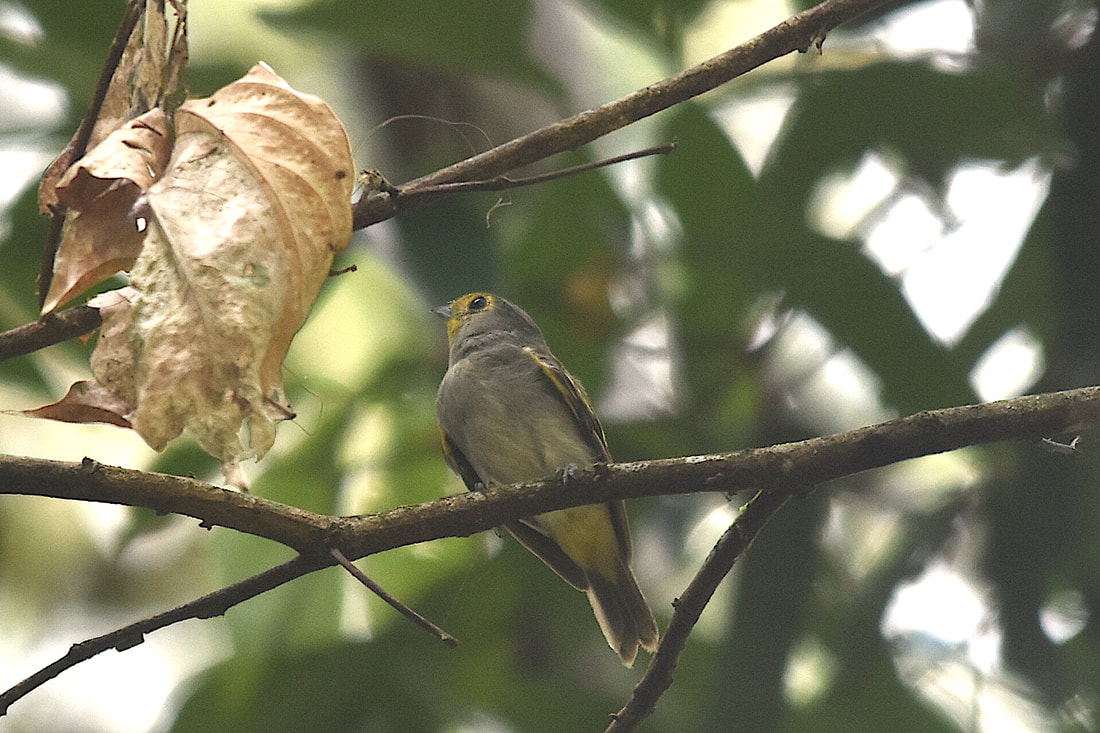
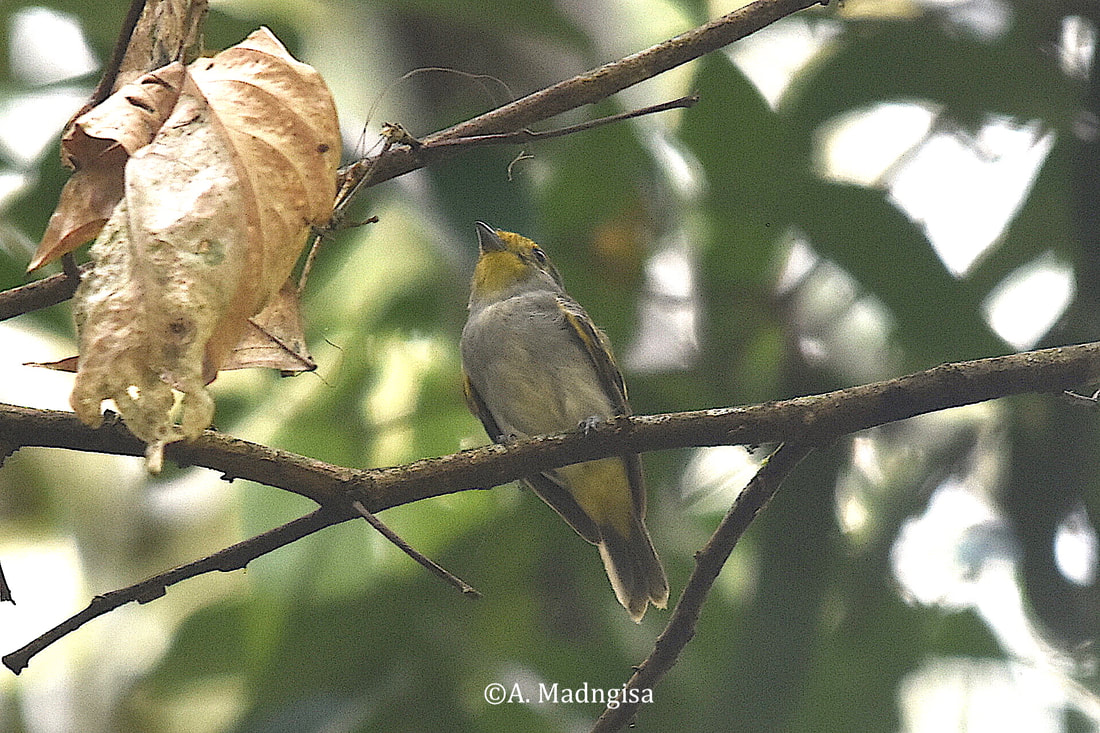
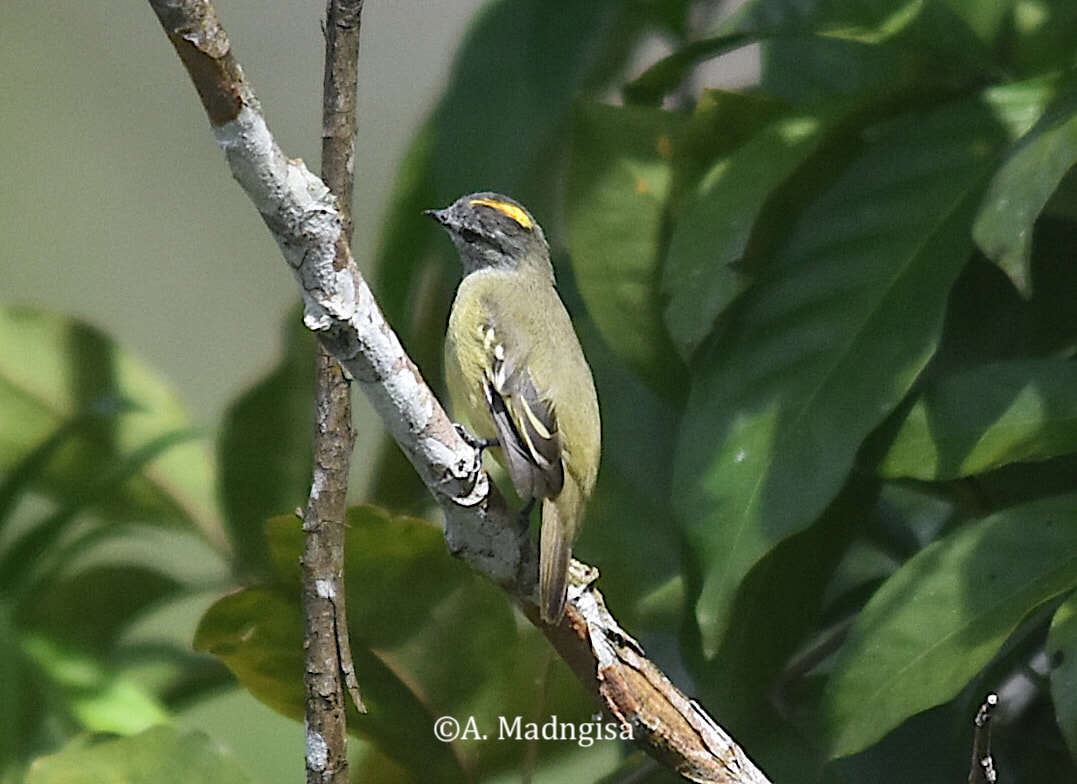
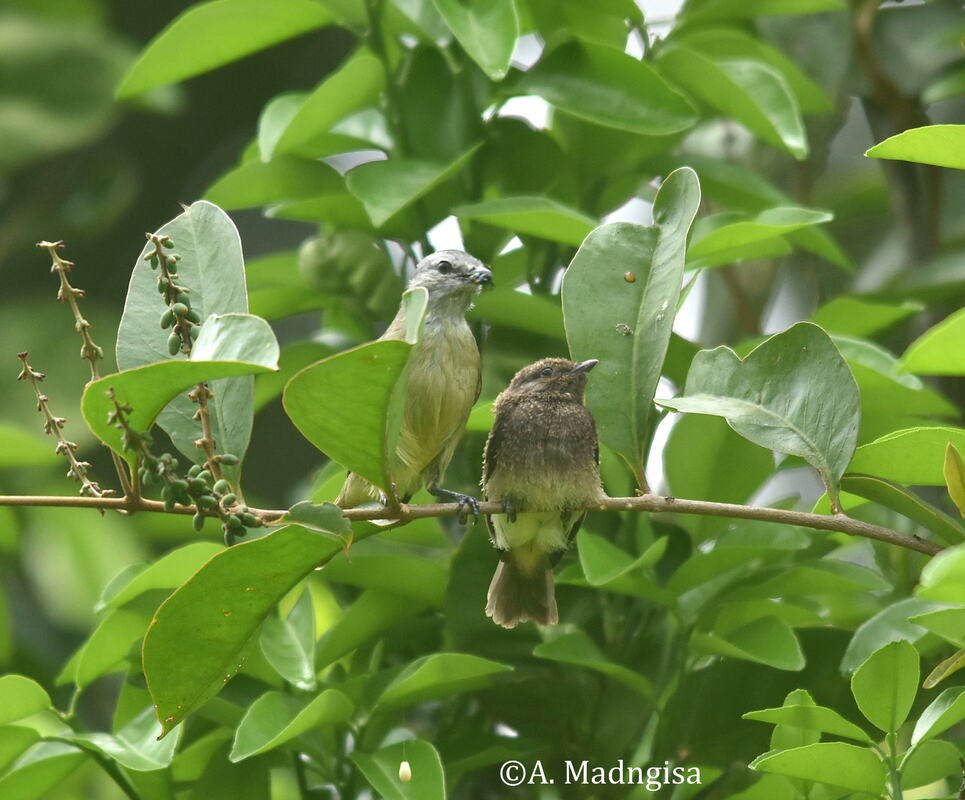
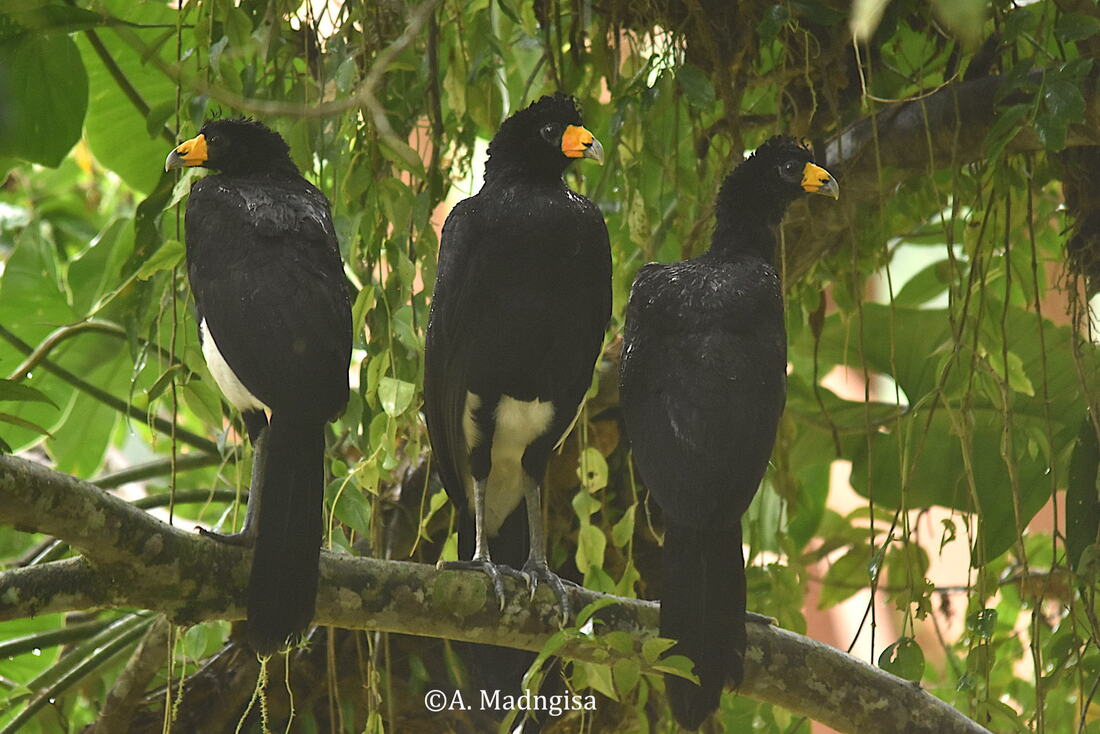
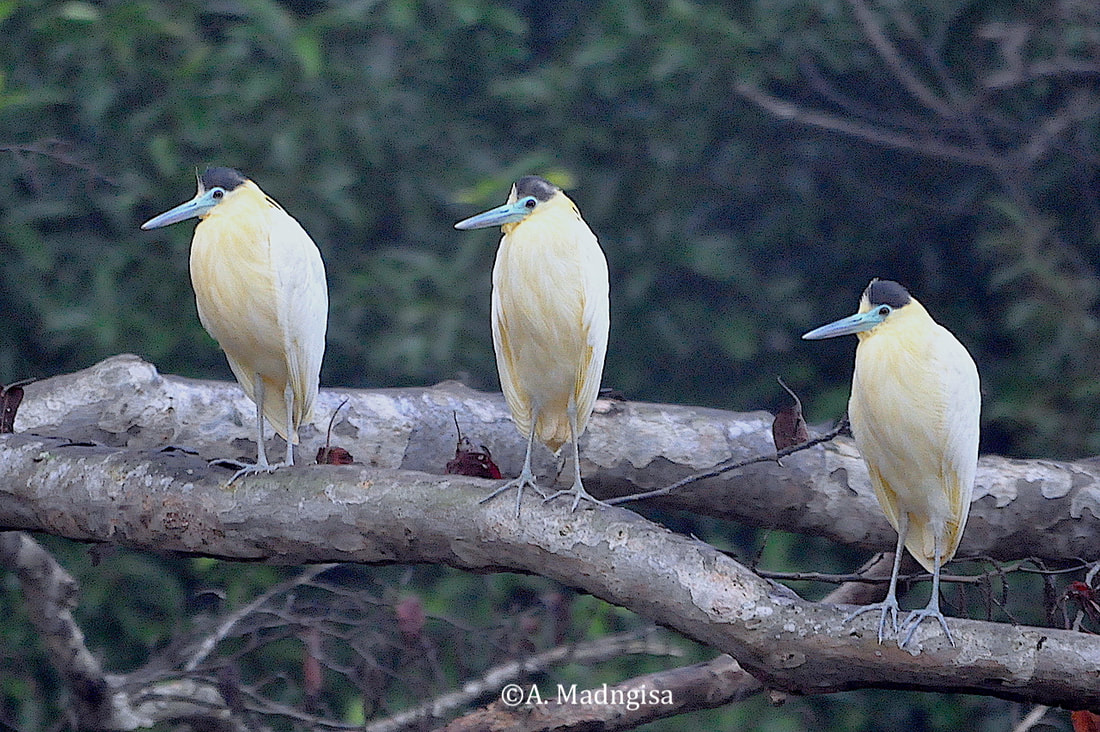
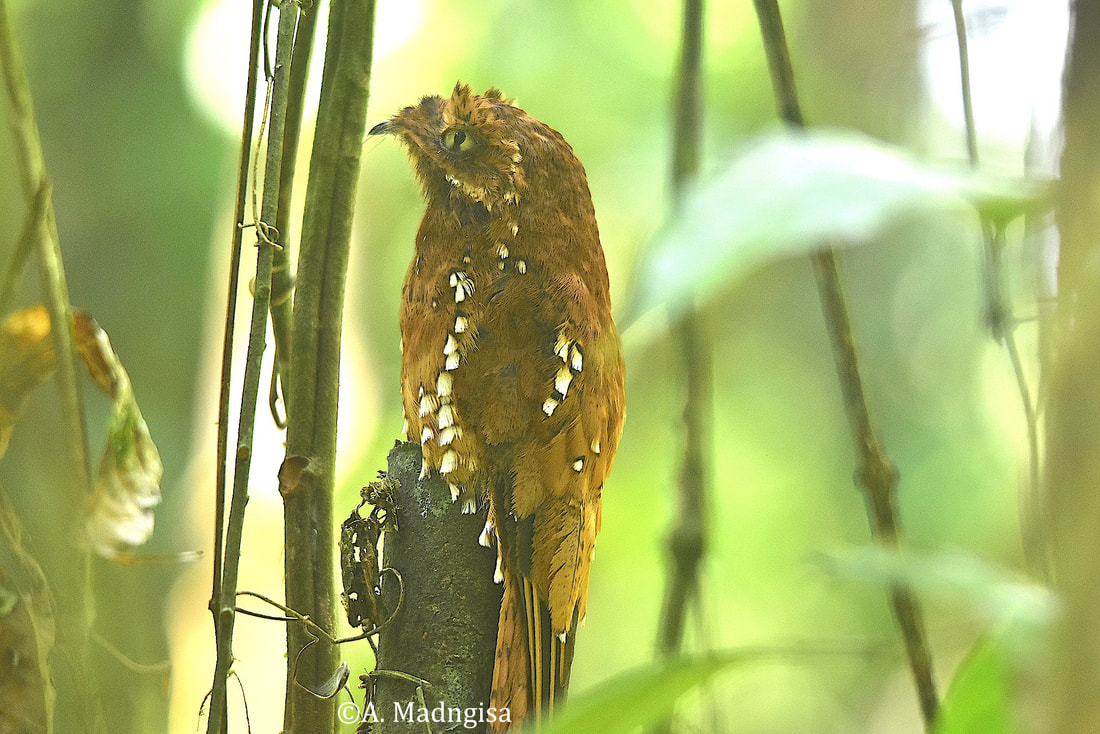
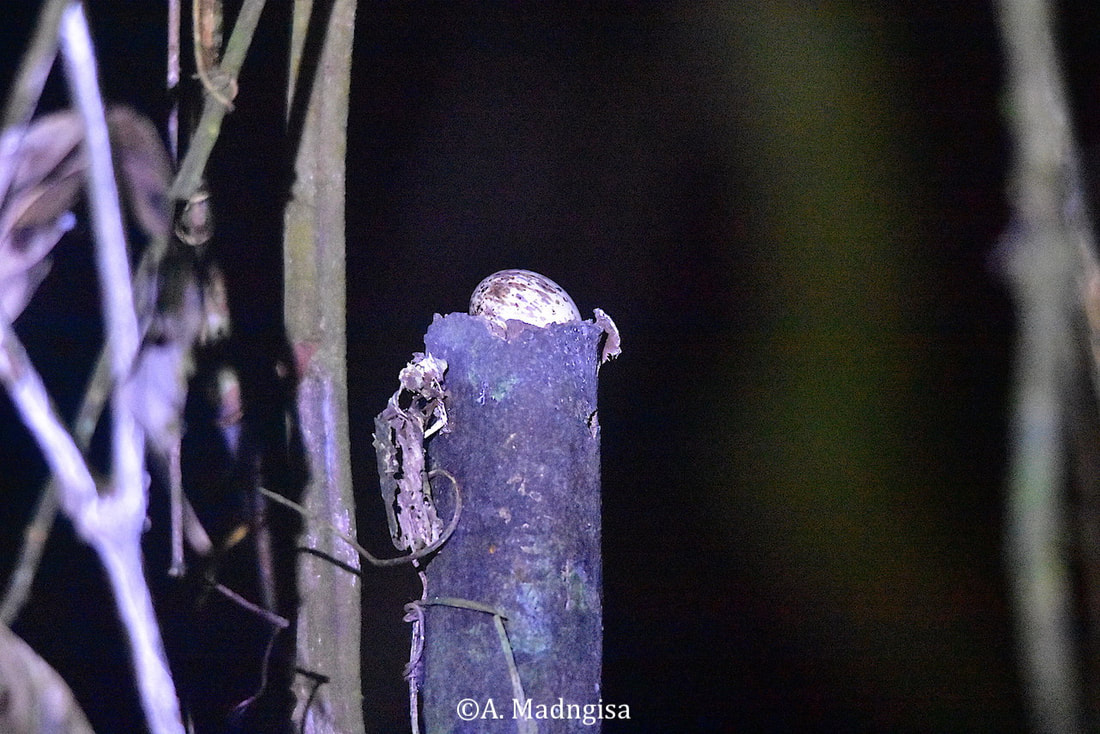
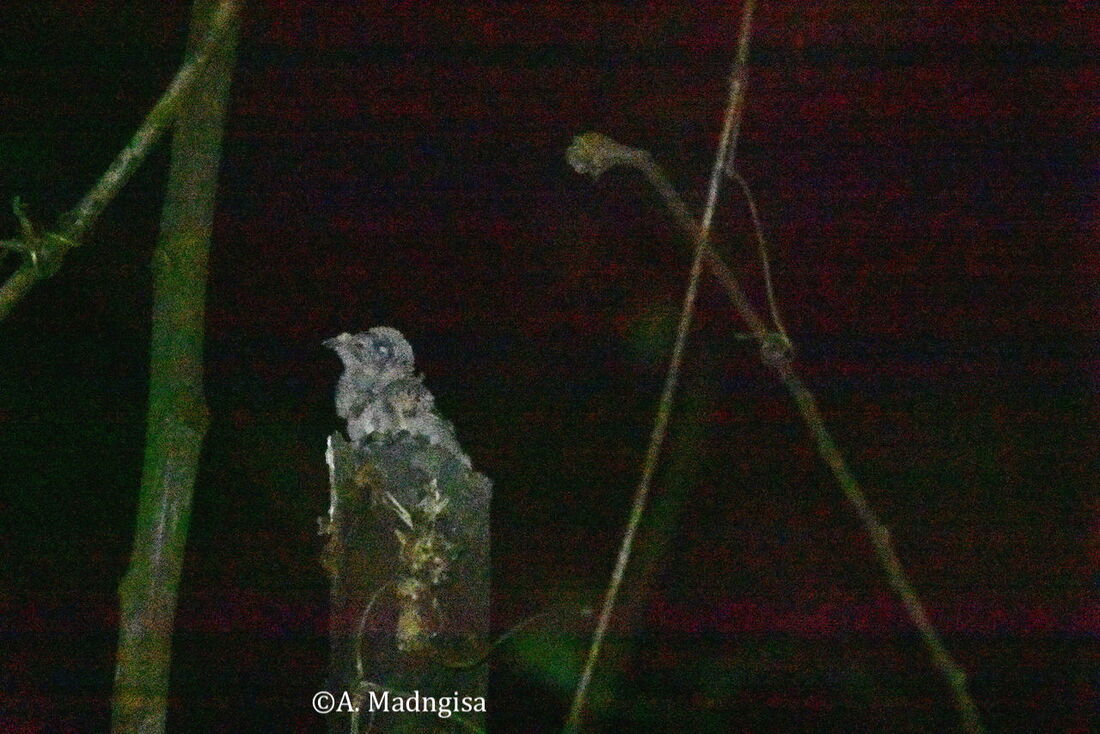
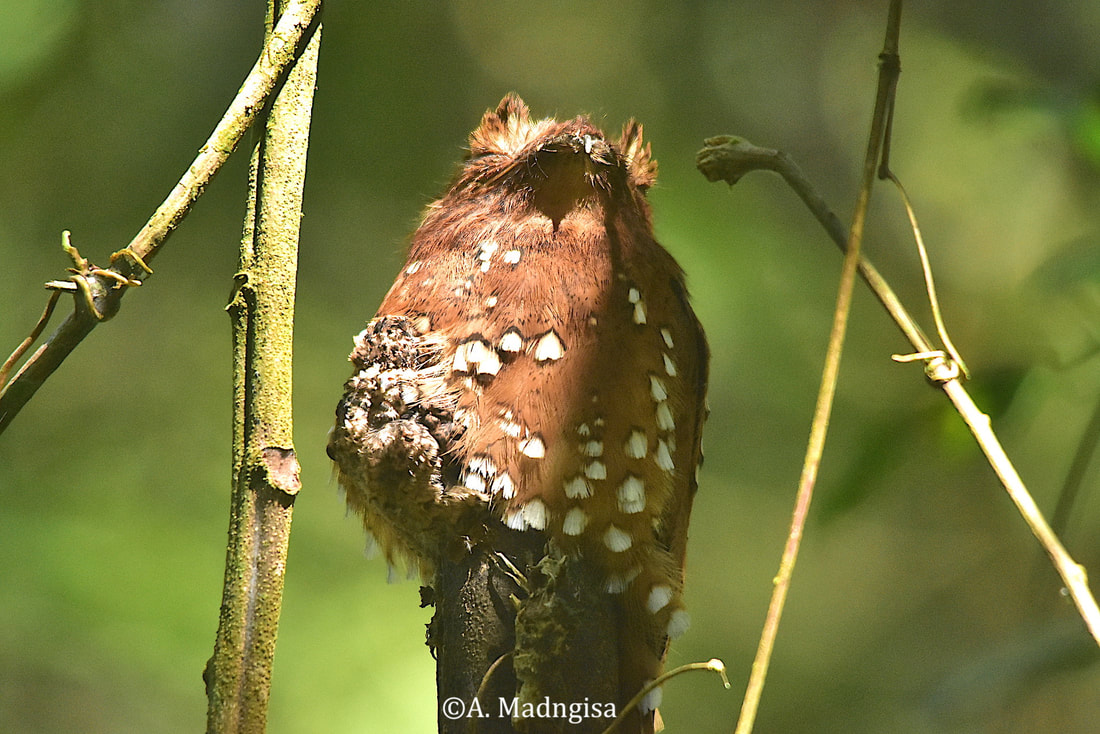
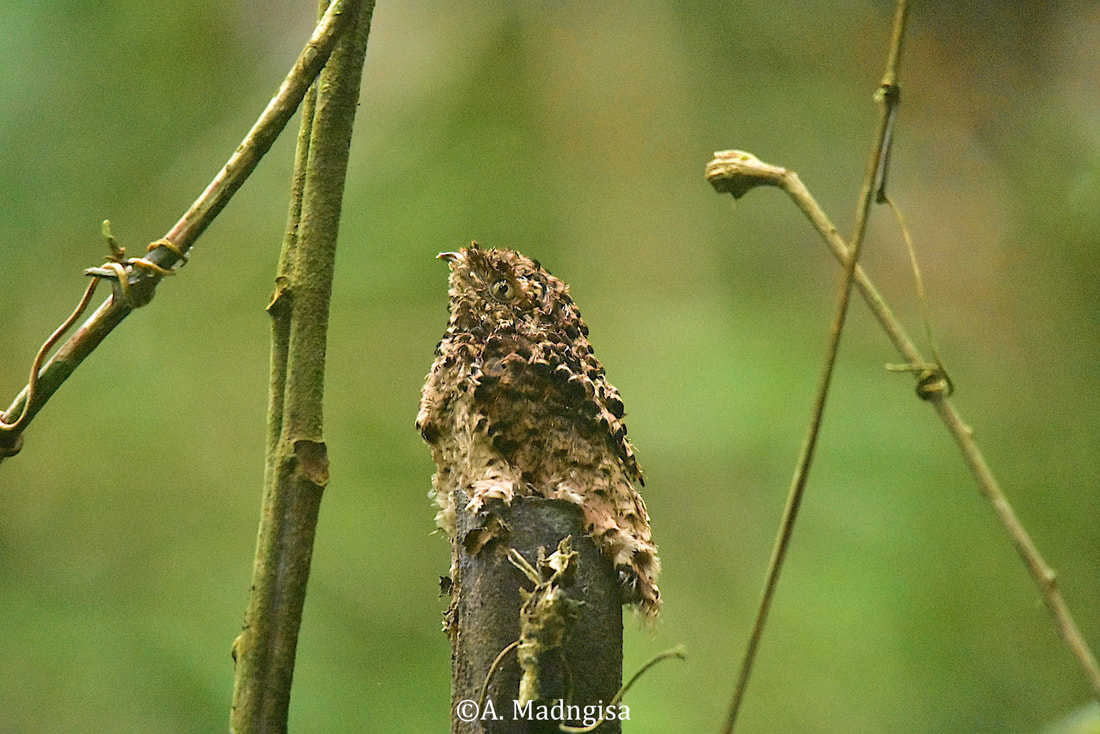
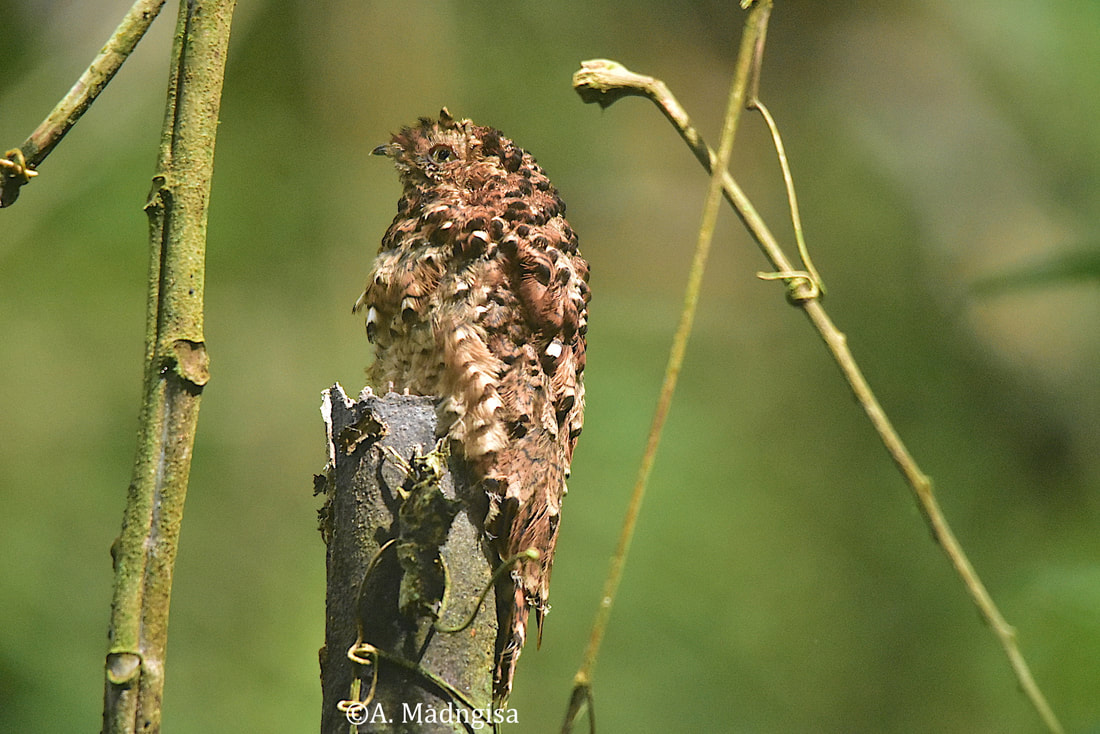
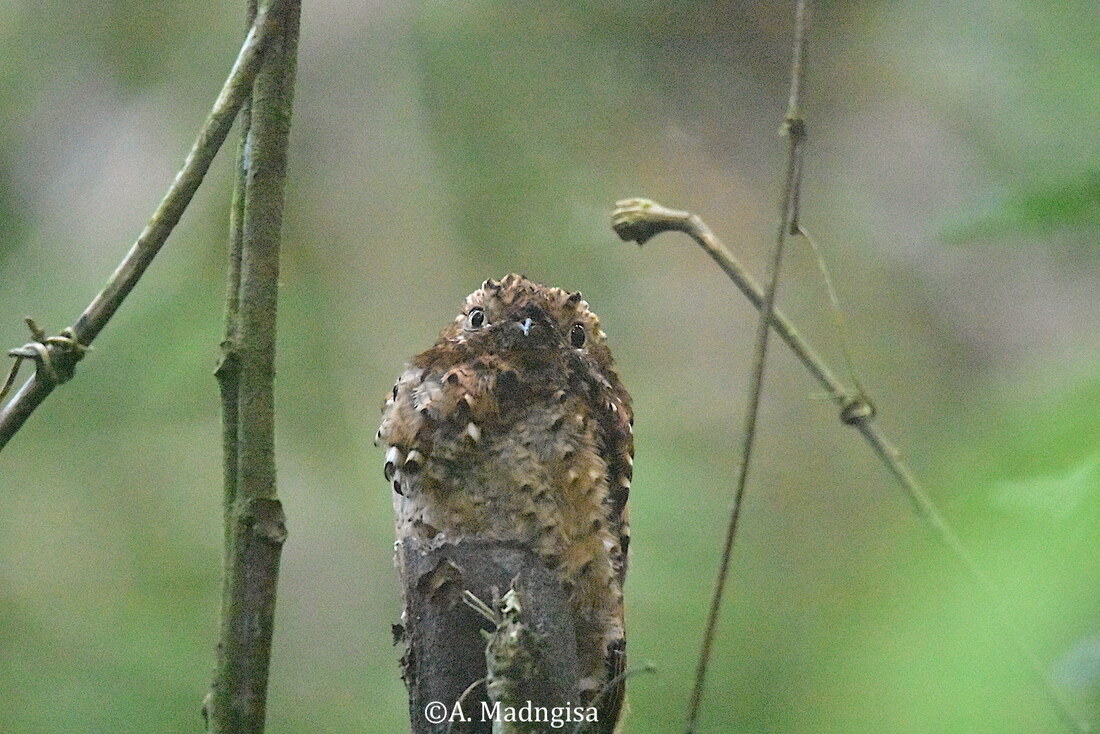
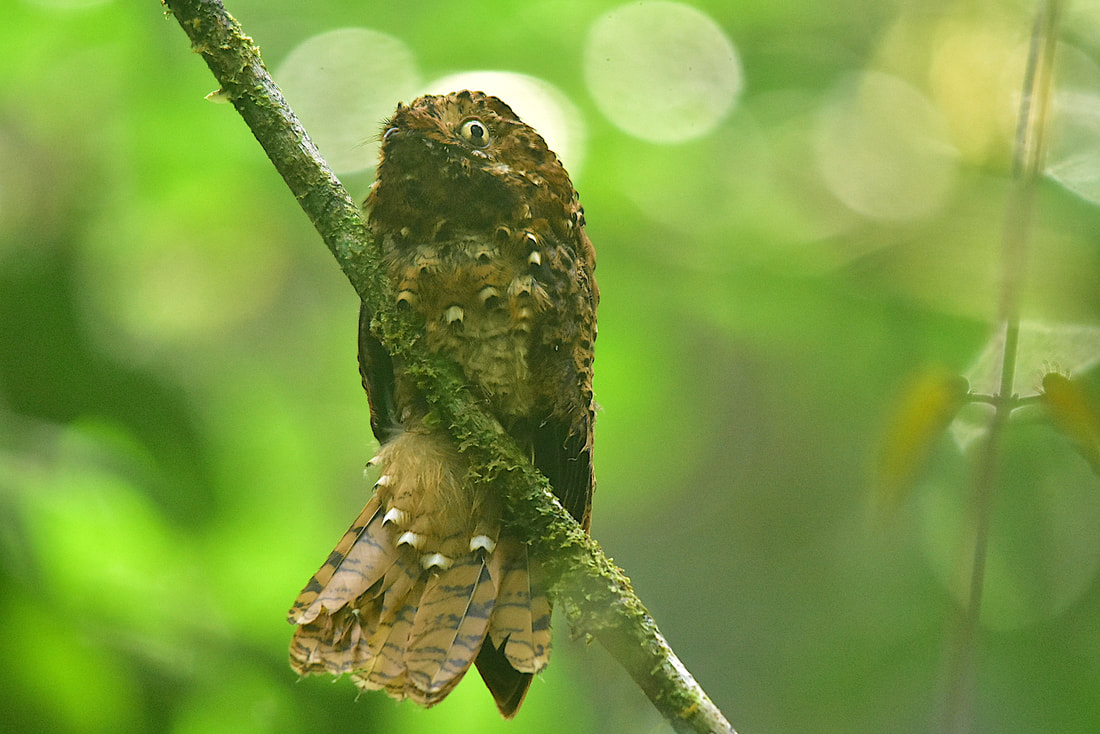
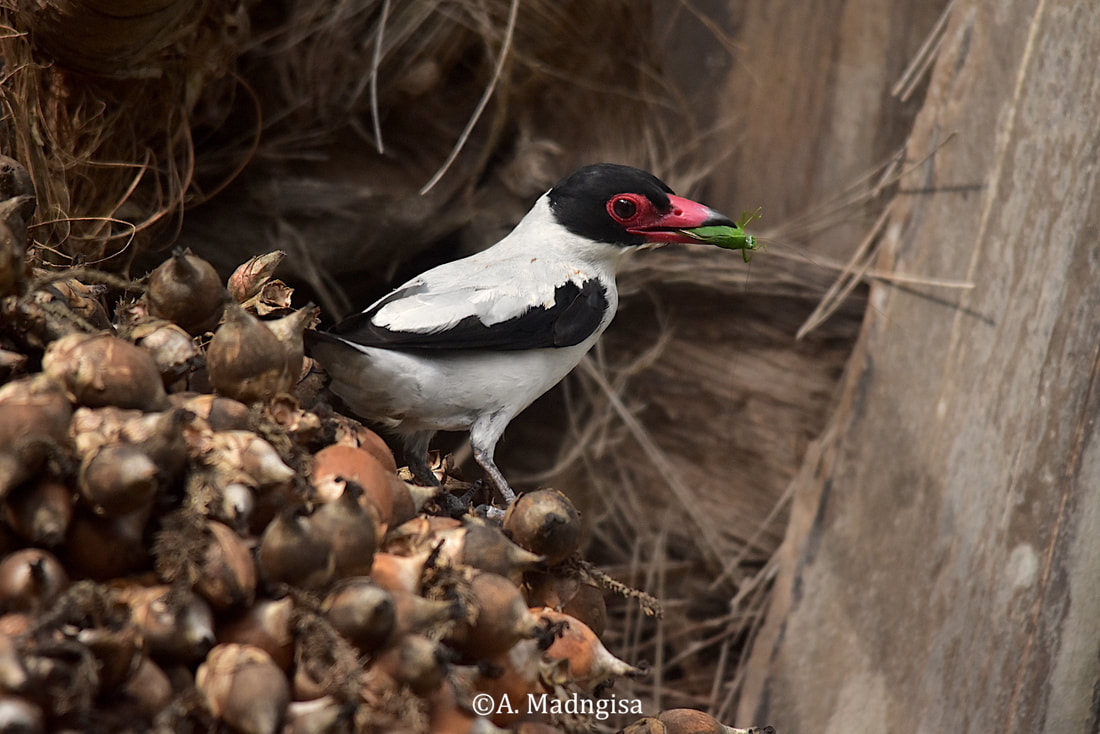
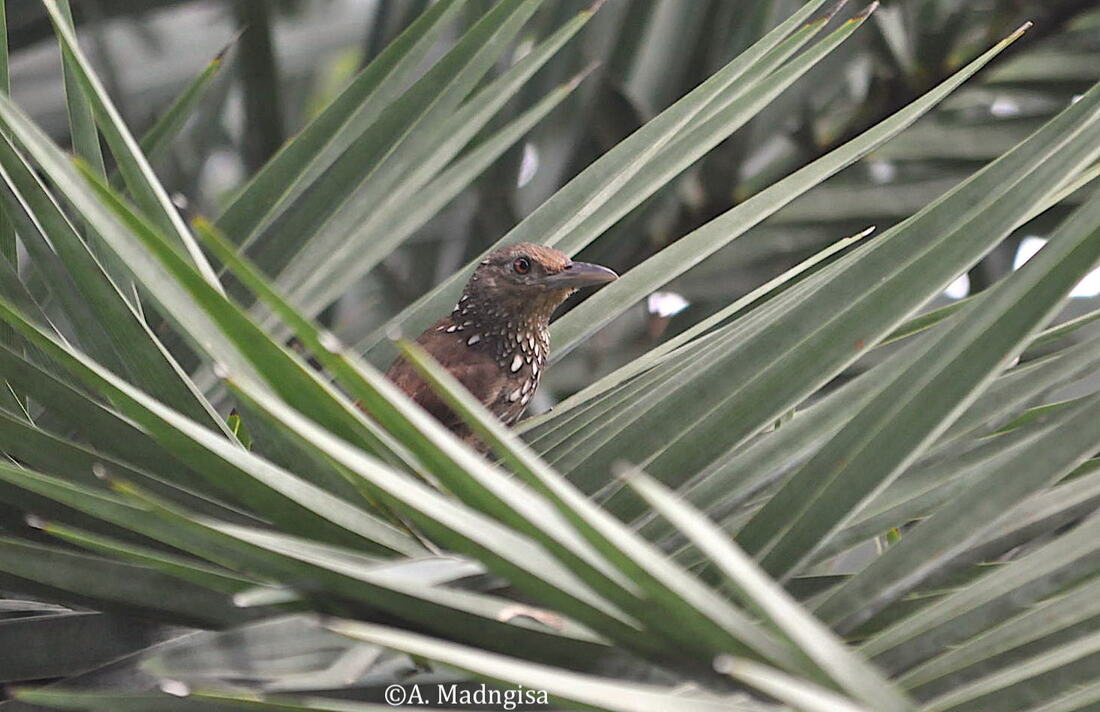
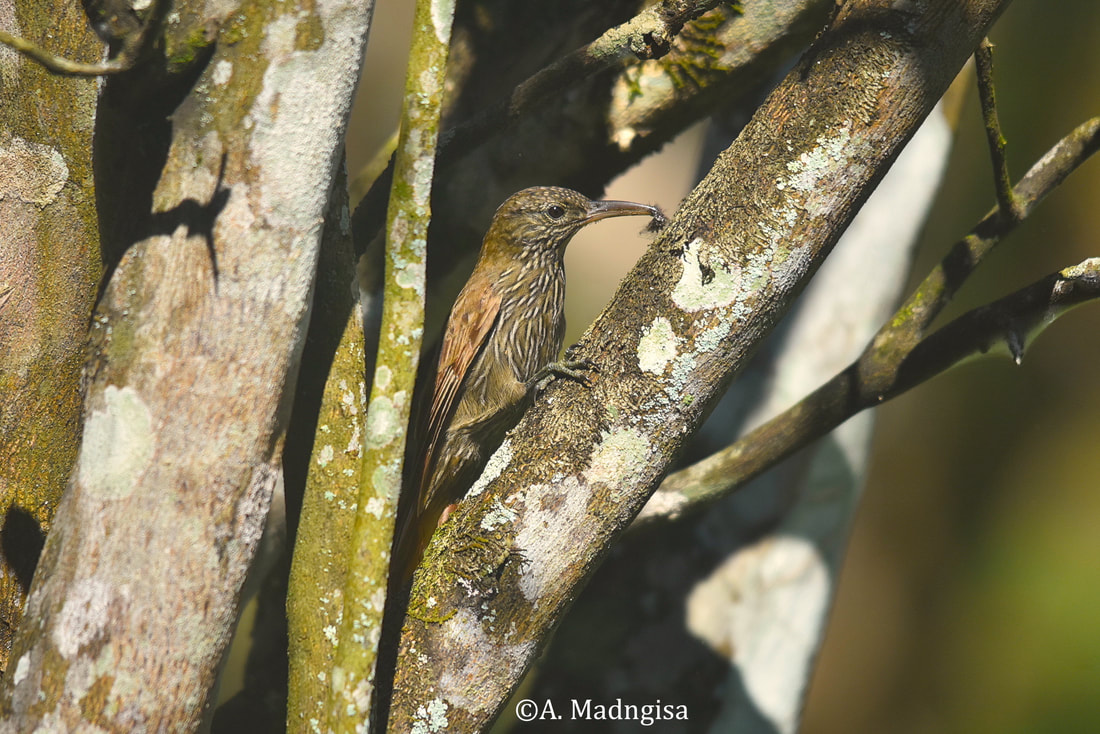
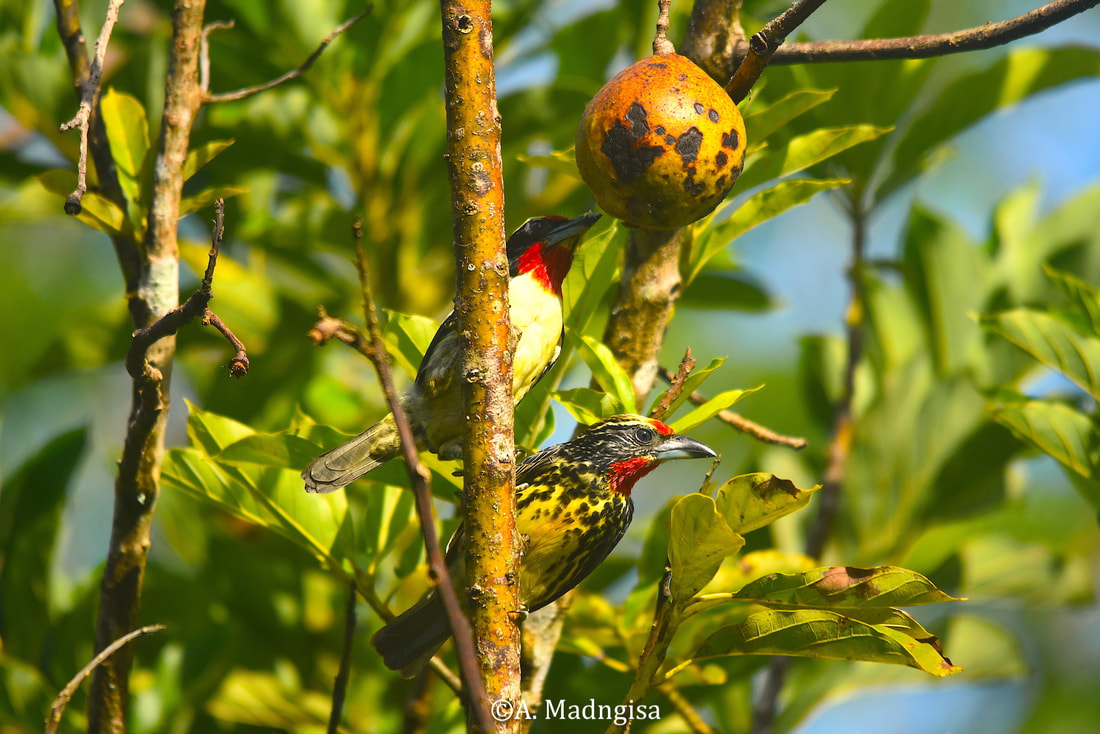

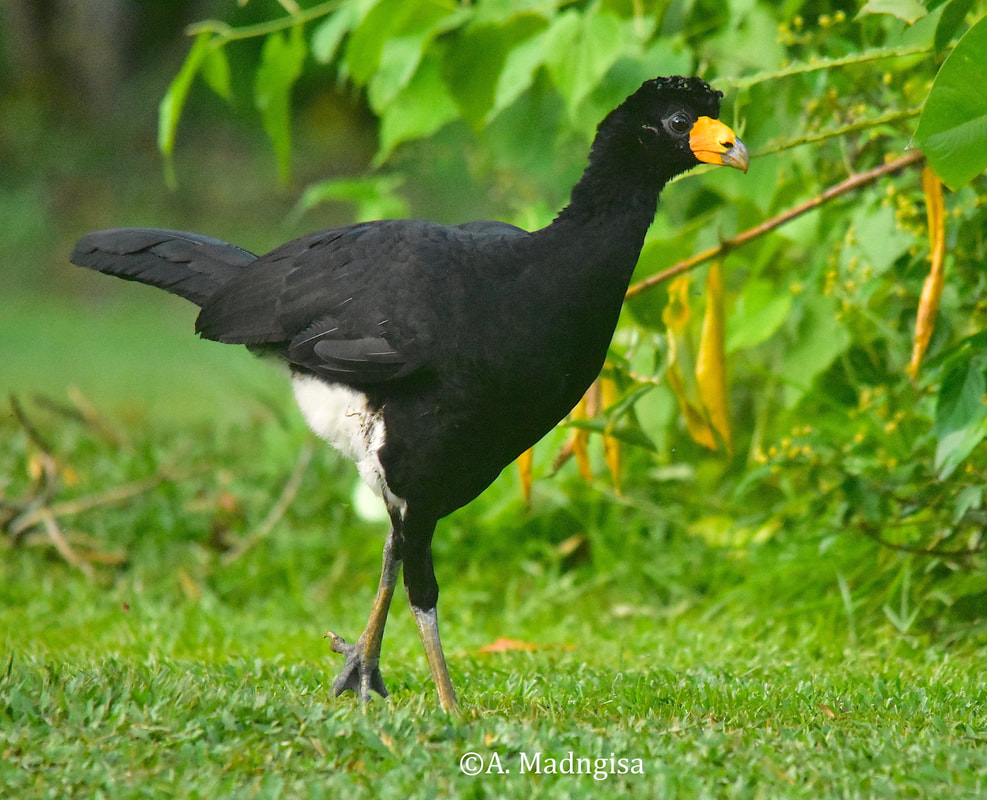
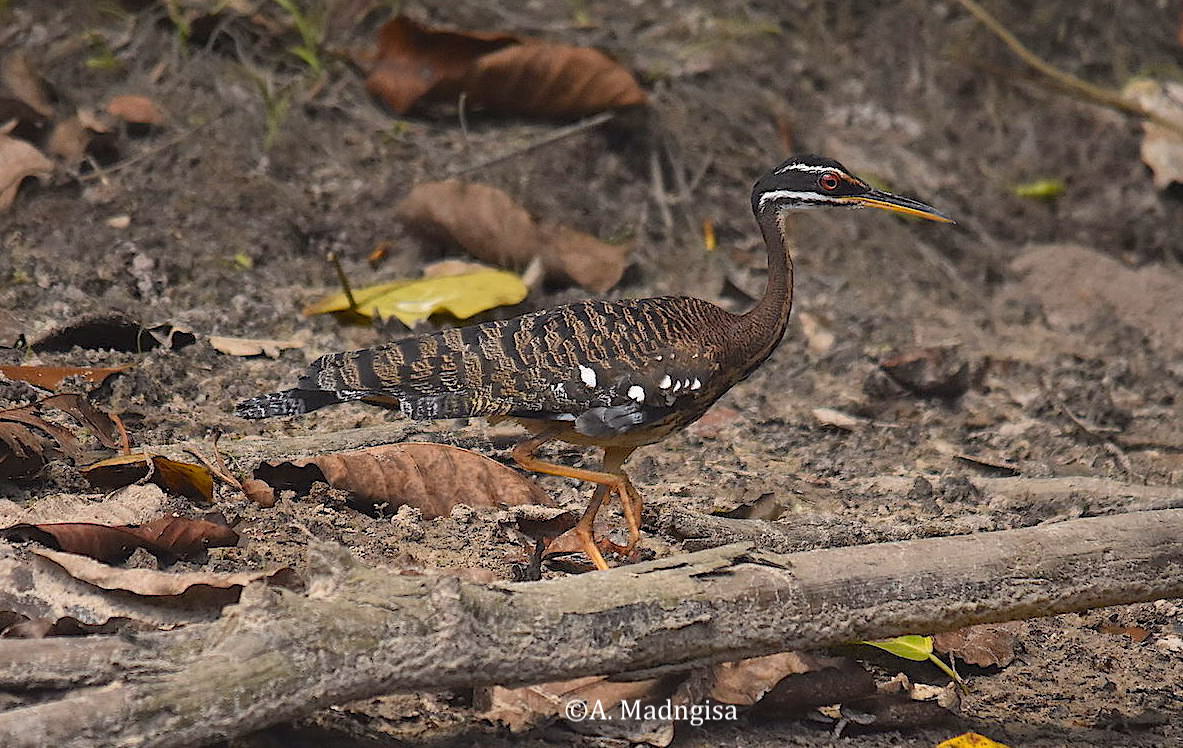
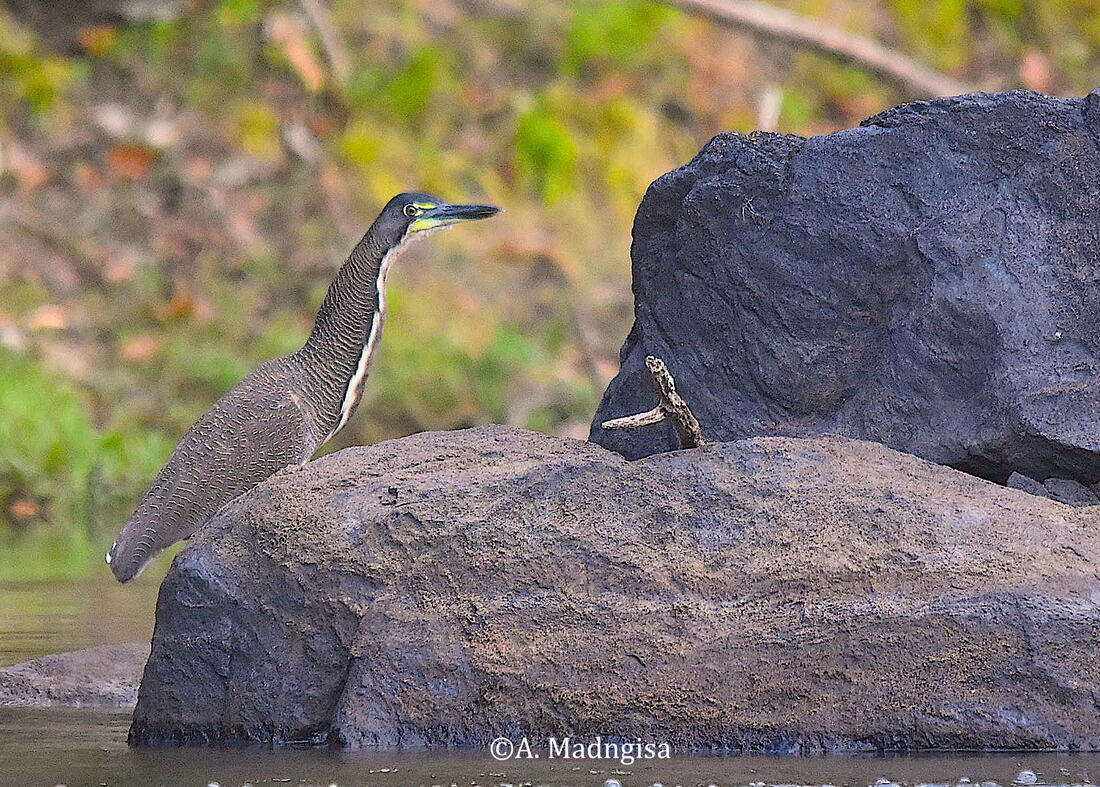
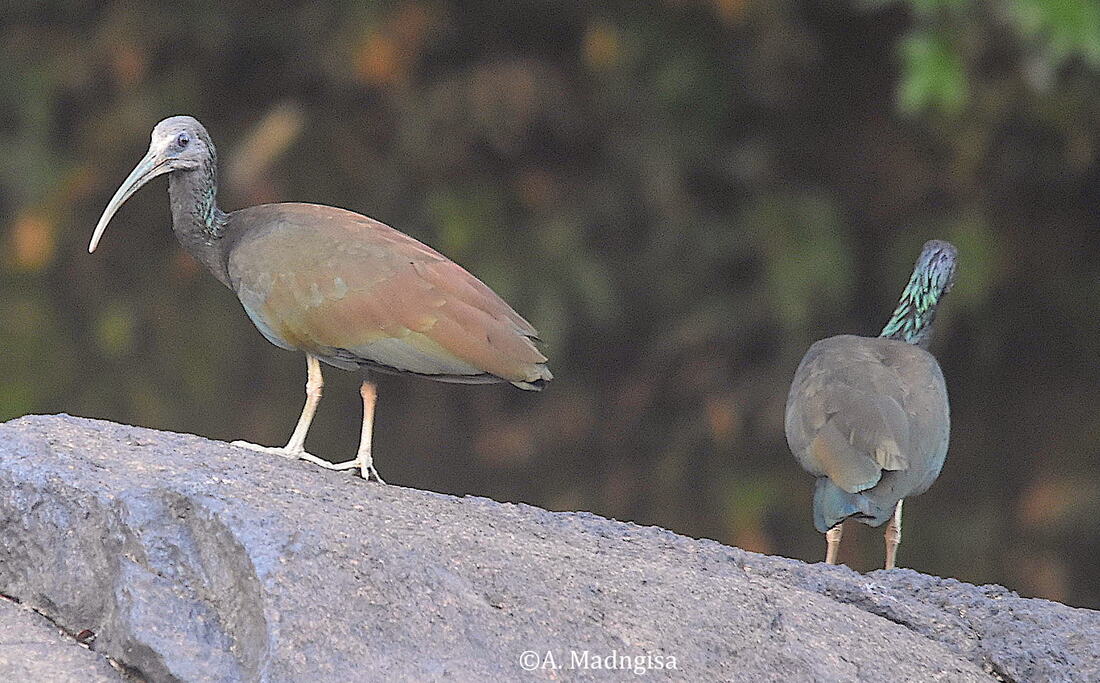
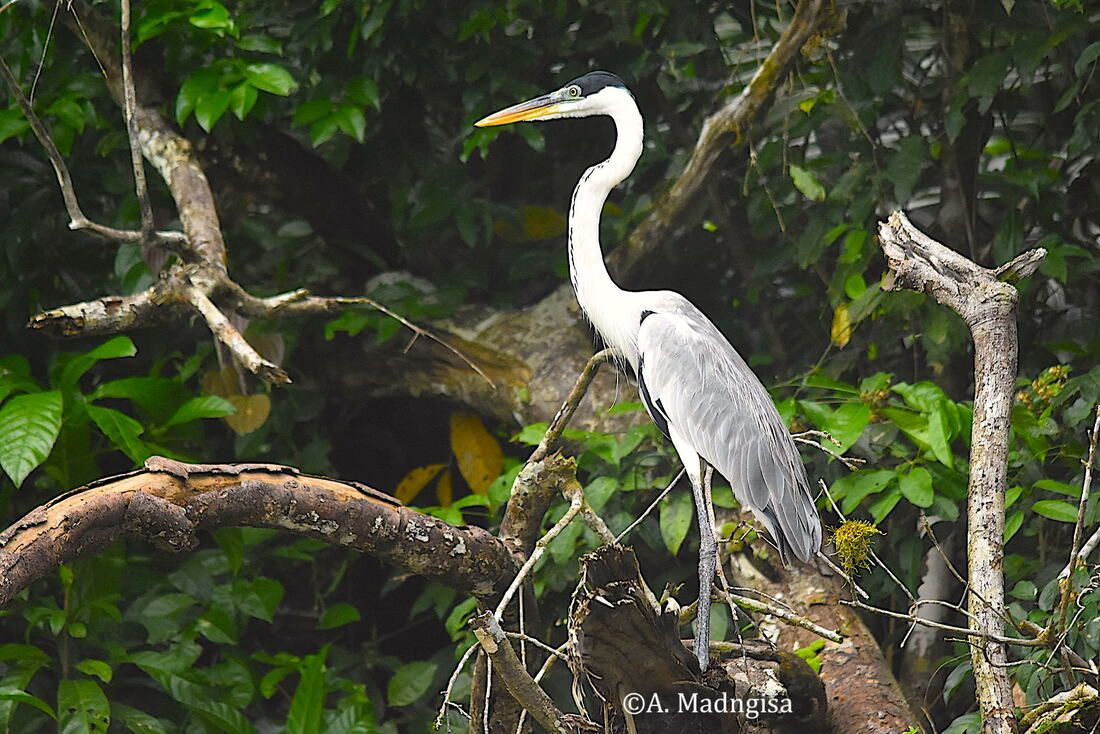
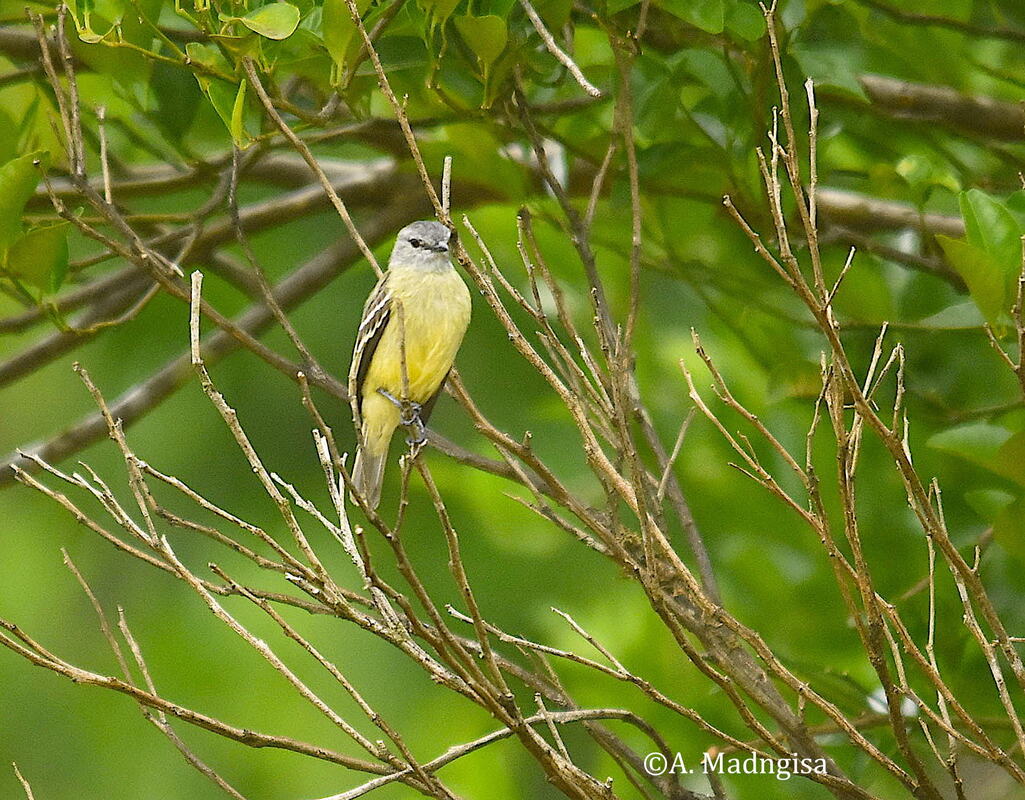
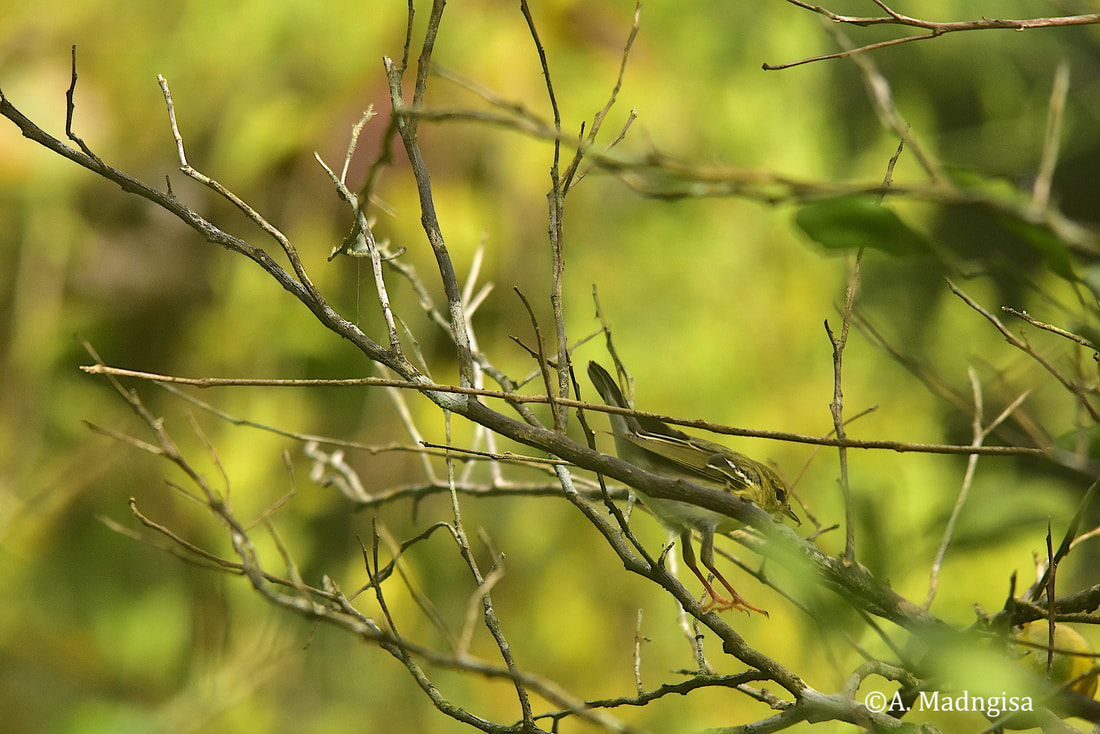
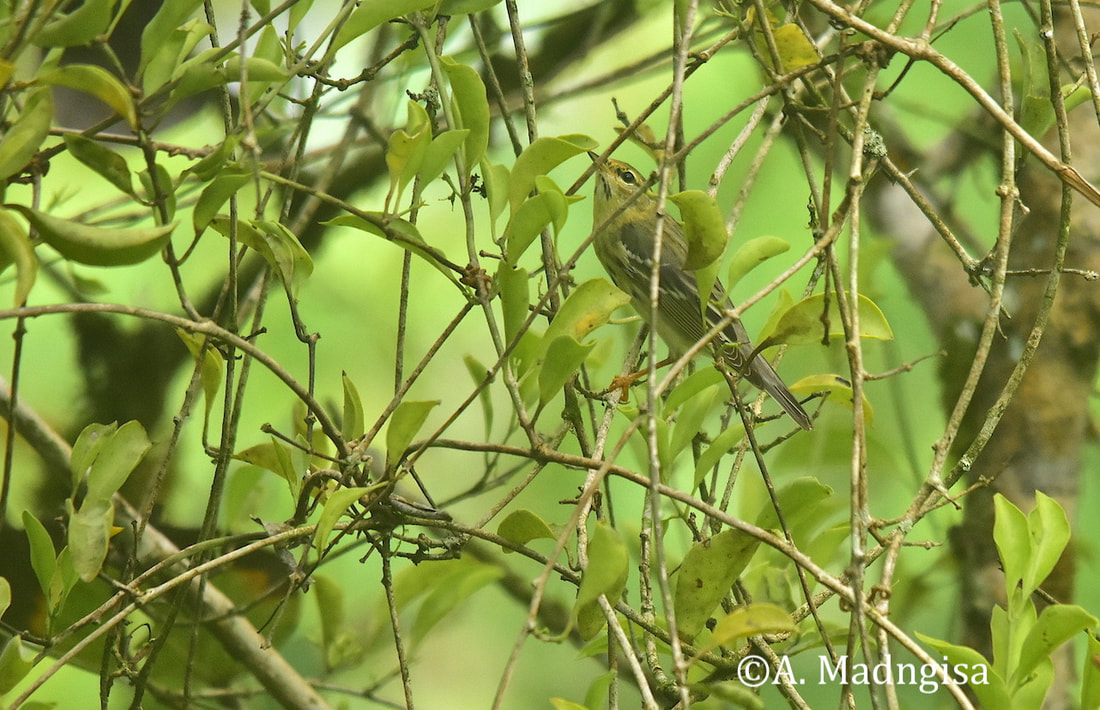
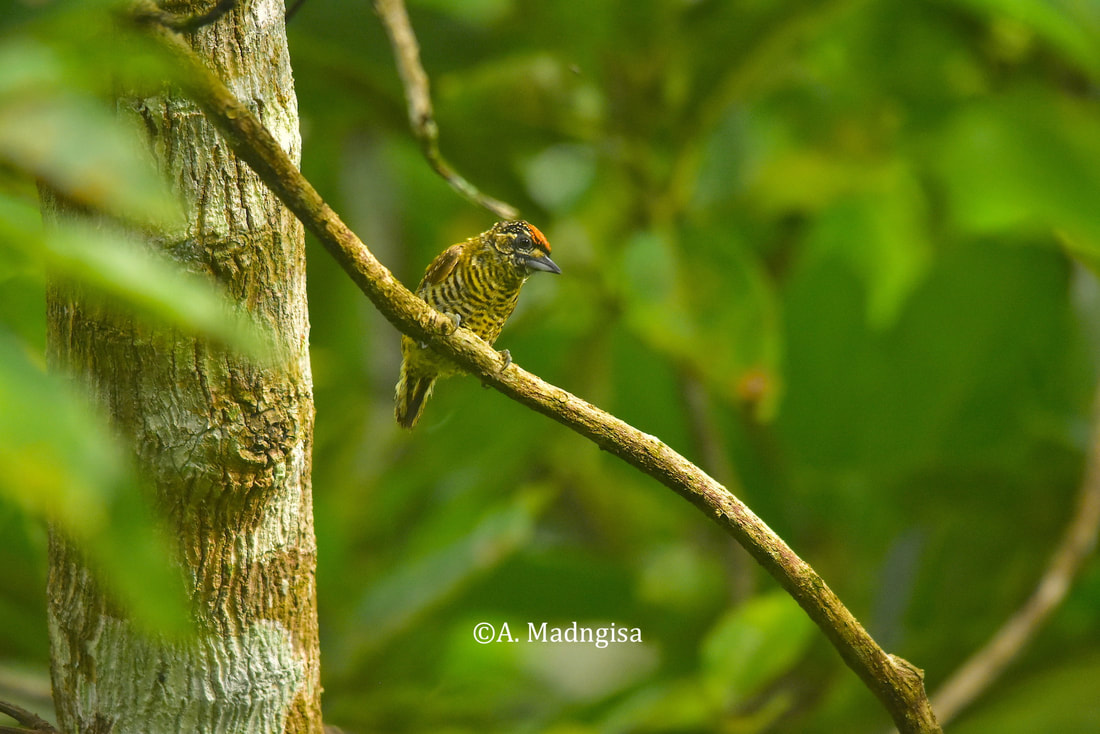
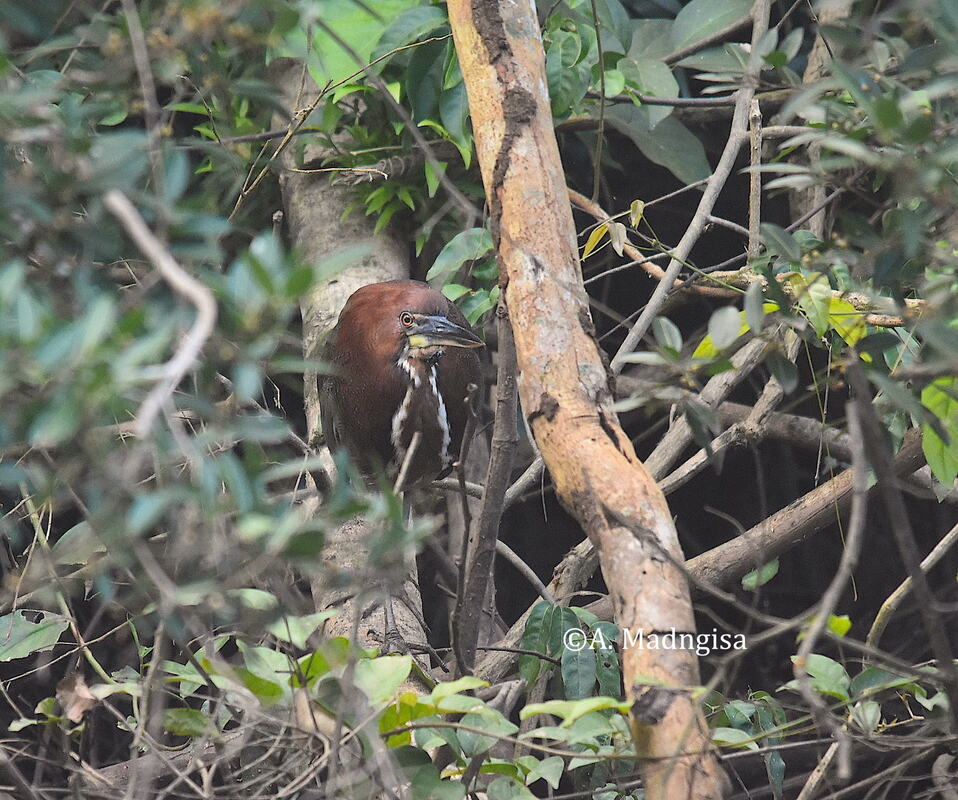
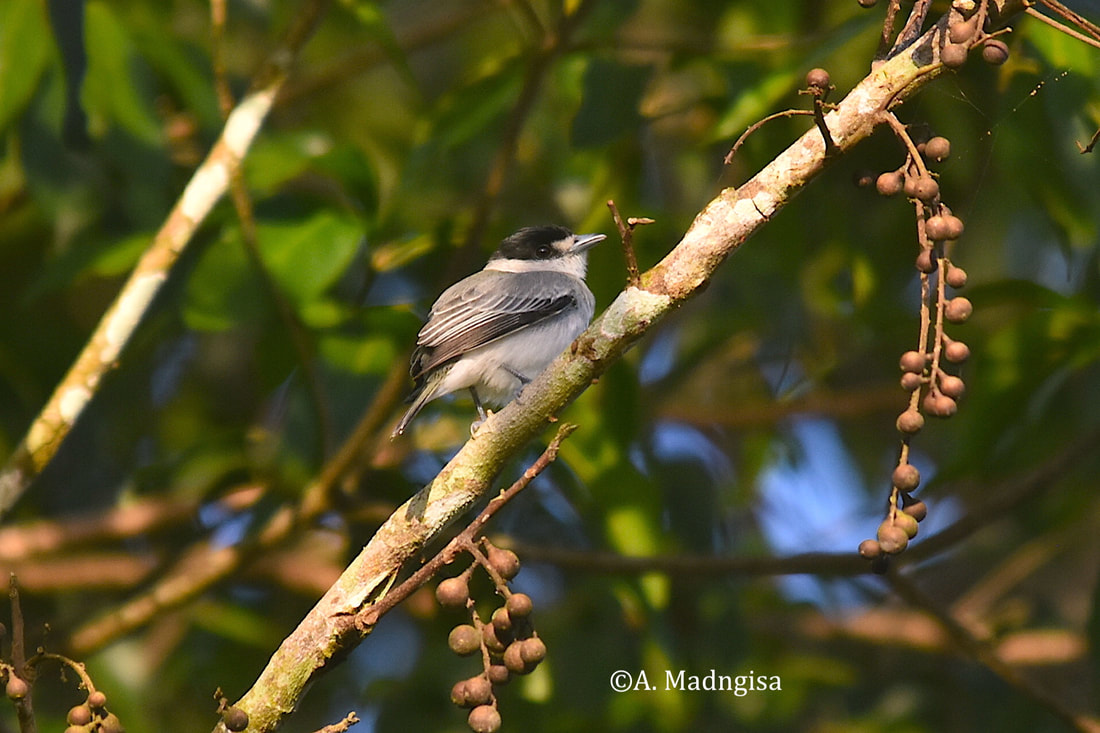
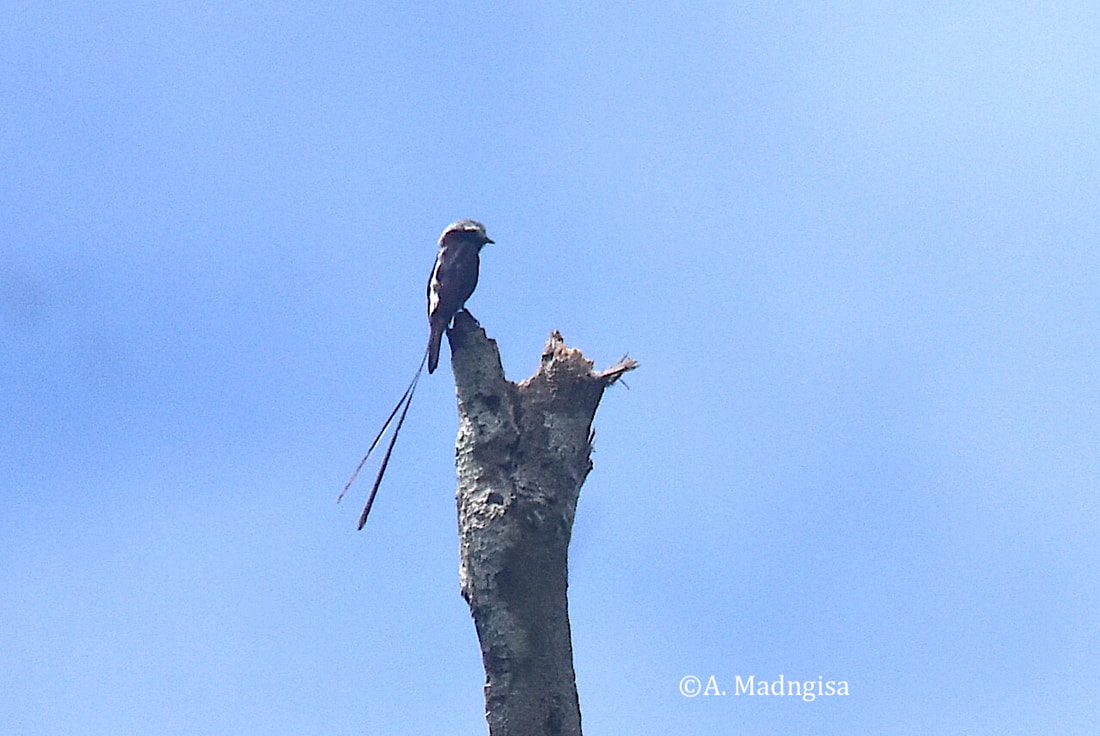
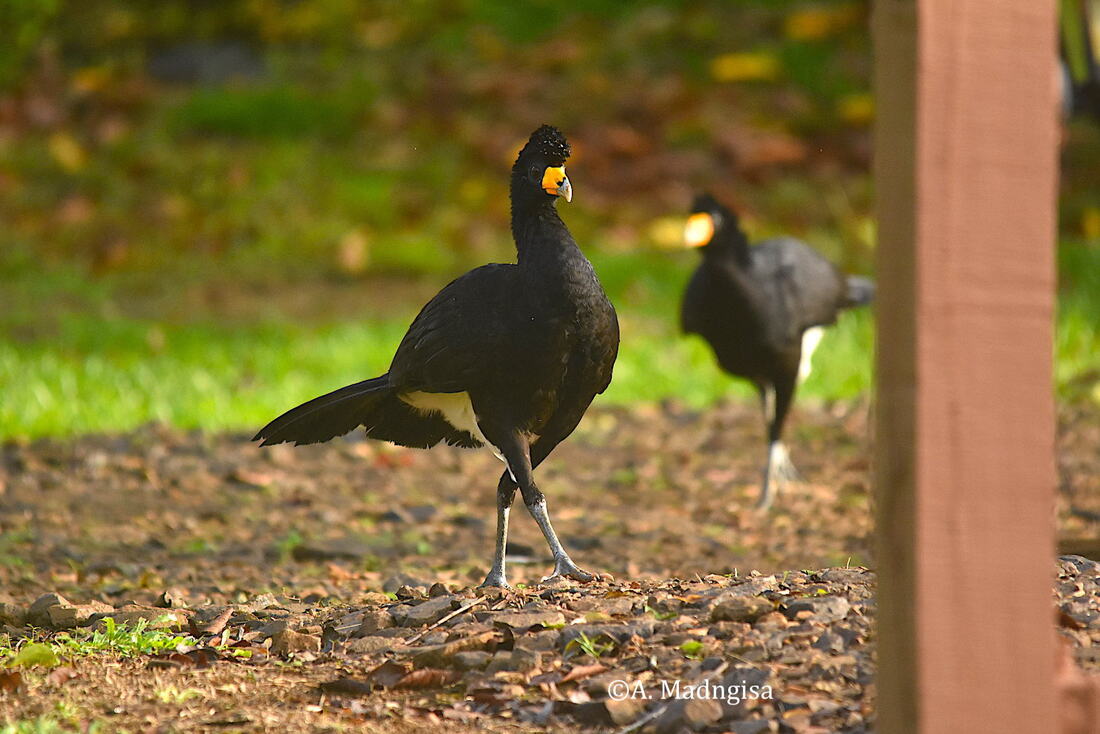
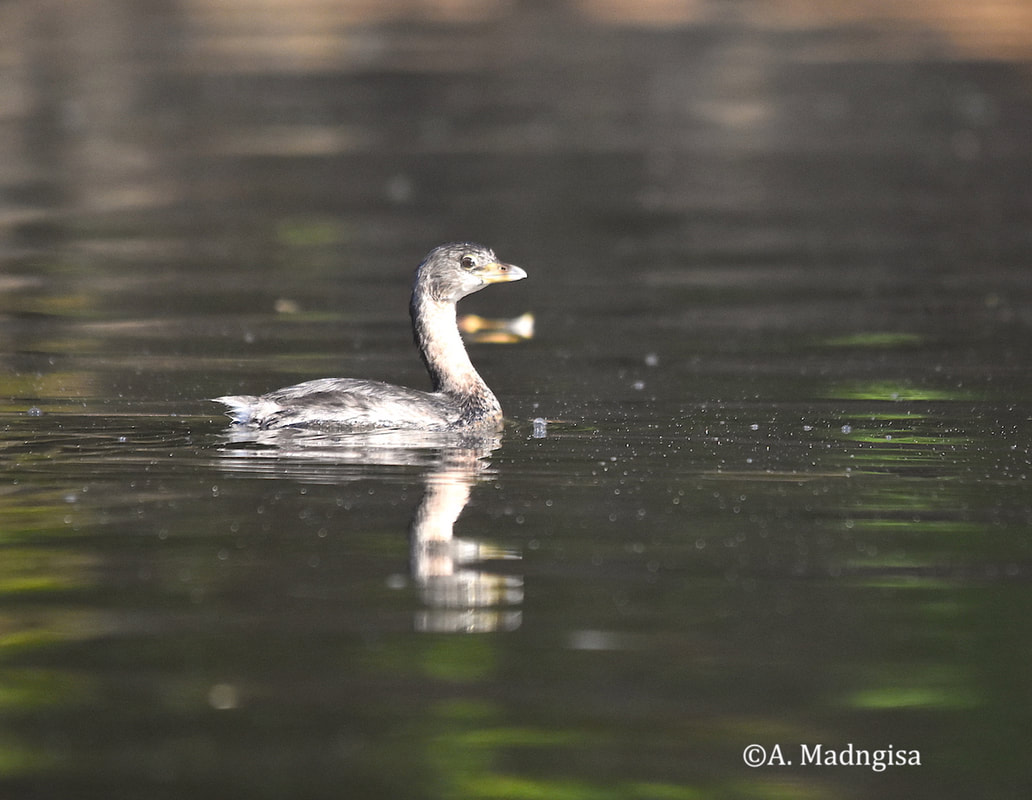
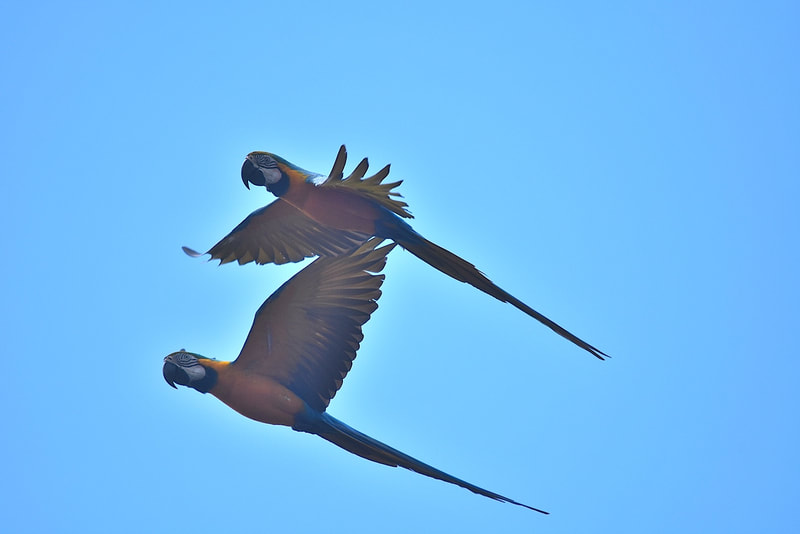
 RSS Feed
RSS Feed